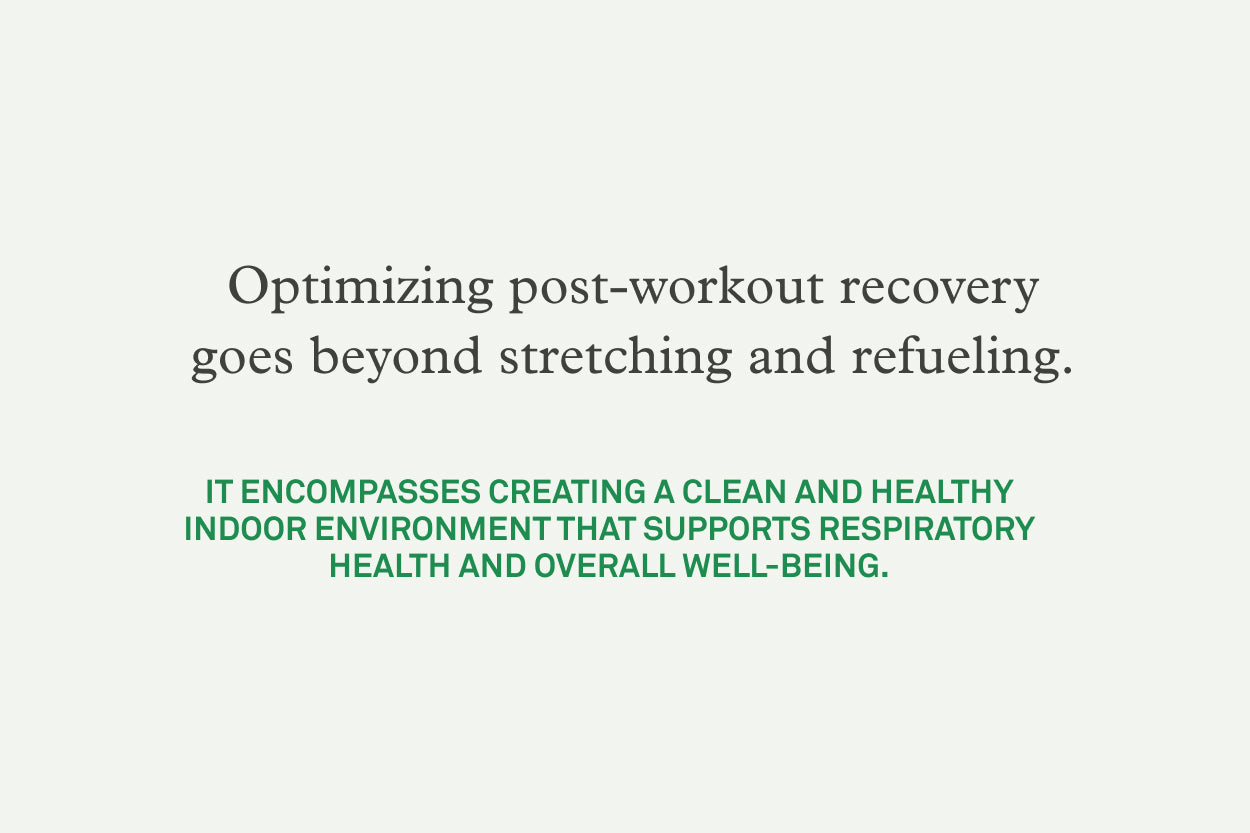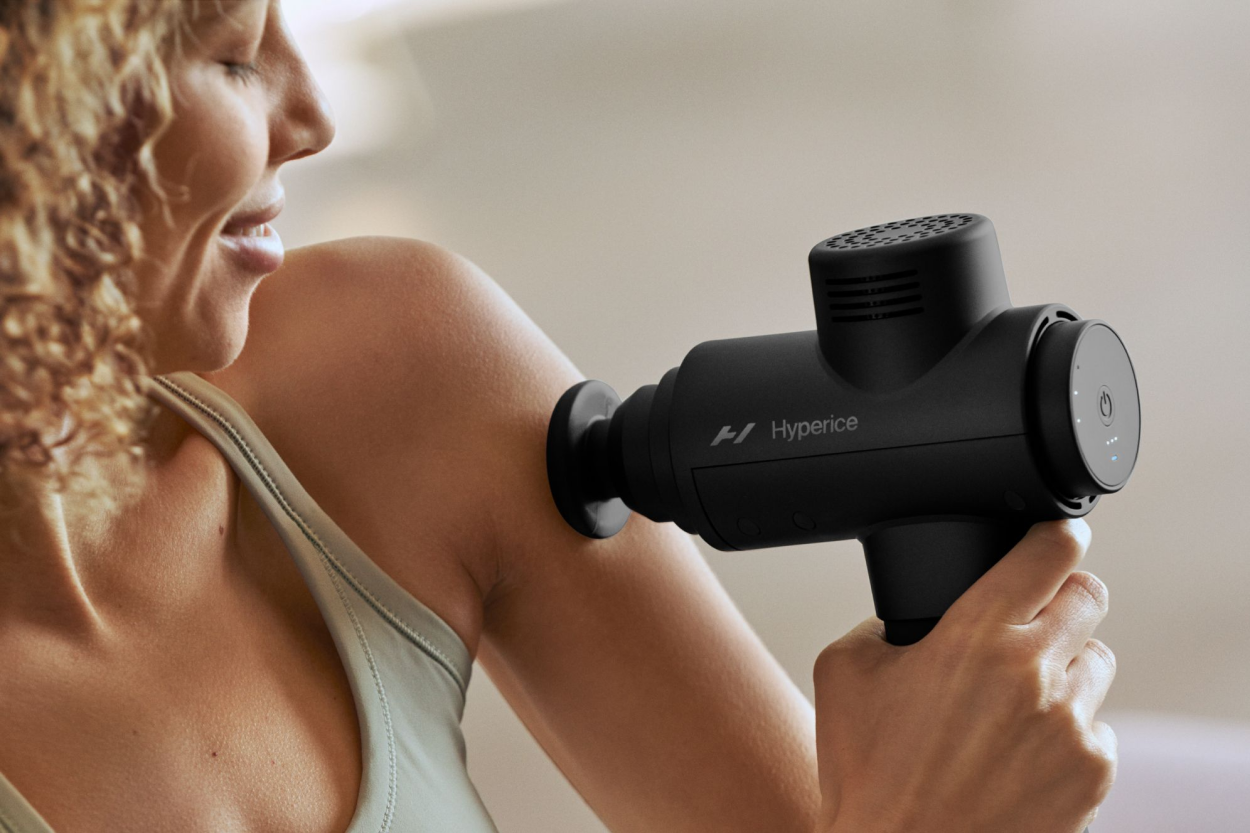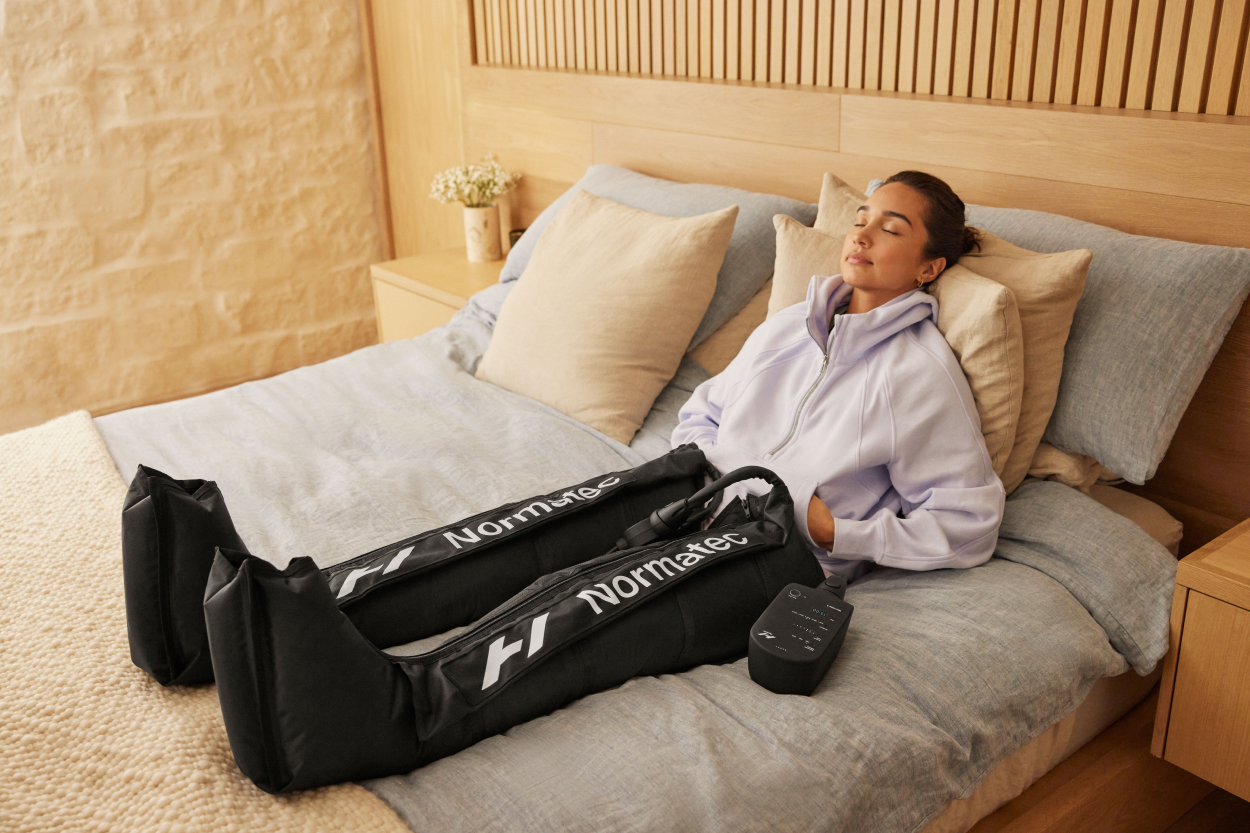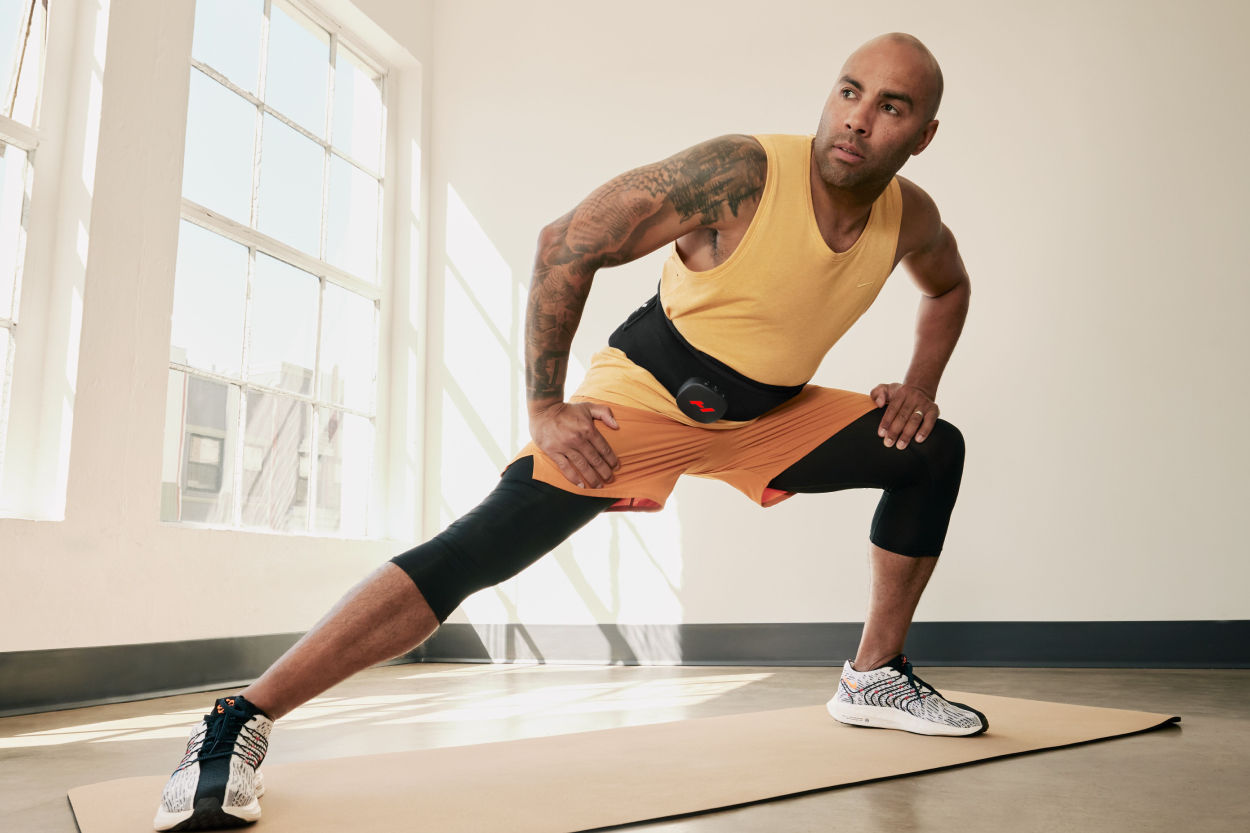Exercise is stressful for your body, and dealing with that stress is what makes you stronger, healthier, and more fit. After you finish your last rep and start to cool down, your body shifts into recovery mode, repairing muscle, replenishing stored energy and nutrients, and getting everything back to the way it was before your workout. It also starts making small changes to help you better handle physical activity in the future. Working out is the catalyst for your fitness gains, but the post-workout recovery is where all the magic happens. And you need plenty of oxygen to power that magic.
Optimizing your recovery goes beyond resting and refueling; it includes creating a healthy indoor environment with the clean air you need to support muscle recovery, respiratory health, and overall well-being. Read on to discover how to enhance your recovery environment, and find our favorite recovery tools from Hyperice.
Why is post-workout recovery so important?
It takes a lot of extra energy to power your musculoskeletal system (bones, joints, and muscles) during a workout, and your heart and lungs have to work hard to keep up. As you exercise, your heart starts beating faster and your breathing rate increases to help supply your muscles with the oxygen-rich blood they need.
Muscles get their energy from adenosine triphosphate (ATP), which your body creates by breaking down glucose (sugar). Your cells usually store enough ATP and oxygen to fuel your muscles throughout day-to-day life, but high-energy workouts quickly use up this energy supply. So, your body has to start turning glucose into ATP without using oxygen. This process, called anaerobic ATP production, creates lactic acid and can cause small muscle tears.
Our bodies are good at stepping up to the plate and handling the stress of exercise, but they can’t produce energy at that level forever. If you don’t give your body enough time to recover after a workout, you can increase your chance of injury and slow your athletic progress. Your post-workout recovery is crucial for making sure you’re rested, healed, and ready to tackle whatever comes next.

What happens in your body during workout recovery?
After a workout, while you focus on drinking water, replenishing electrolytes, eating nutrient-packed foods, and getting a good night’s sleep, your body is busy repairing damaged muscle tissue, getting rid of waste products like lactic acid and carbon dioxide, and replenishing the water, energy, and nutrients you used to exercise.
The time it takes you to fully recover after exercising depends on your current fitness level and the length, type, and intensity of your workout. After a lighter workout, you may need only a day or so to recover. After a more intense workout, you may need to rest your body (or at least certain muscle groups) for a few days or longer.
You may experience muscle soreness and fatigue during your recovery, but no pain doesn’t necessarily mean no gain. It’s possible to build muscle without experiencing post-workout soreness.
When you exercise regularly, your respiratory, cardiovascular, and musculoskeletal systems start to change and adapt to handle physical activity more efficiently. You may notice that you can lift heavier weights or run for longer without stopping. Consistent exercise can help increase your strength, endurance, and overall fitness level — and most of that progress happens during your post-workout recovery.
How does air quality impact post-workout recovery?
It takes energy for your body to get back to its resting state after a workout — this is called excess post-exercise oxygen consumption (EPOC), or the “afterburn effect.” During your recovery, your body uses extra oxygen and calories to:
- Cool your core temperature;
- Remove lactic acid and other waste buildup;
- Restore oxygen and ATP to your cells;
- Repair any tears in your muscle tissue.

In our blog post on air quality and exercise, we dug into how physical activity can sometimes increase exposure to air pollutants. The same is true about post-workout recovery. Any time your breathing rate is higher than normal, you’ll breathe in more airborne pollutants than when you’re at rest.
Exposure to any air pollution is linked to short-term symptoms like coughing or trouble breathing, as well as long-term health effects, including decreased lung function, irregular heartbeat, and other heart and lung problems that can make exercise difficult. However, fine particle pollution (PM2.5) poses the biggest health risk.
Fine particles in the air are small enough to travel deep into your lungs and even enter the bloodstream — definitely not something you want to inhale while your body’s using oxygen and pumping blood at an increased rate. You can help cut down on indoor air pollution and promote clean air during your recovery by:
- Avoiding pollution-causing activities (especially right after your workout), such as burning candles or incense, frying or broiling food, or cleaning with harsh chemicals;
- Increasing ventilation in your home by turning on fans or using your HVAC system;
- Opening windows on days with good outdoor air quality;
- Using an air purifier, like Molekule Air Pro or Air Mini+ that can capture and destroy pollutants including PM2.5.
Other recovery tools and equipment
While there’s no substitute for recovery basics, like clean air, good nutrition, hydration, and rest, there are some pretty exciting tools out there for anyone looking to take a more active role in their post-workout recovery.
Percussive massage: Handheld percussion massagers help ease muscle tension and soreness by increasing blood flow to a specific body part. The massage guns use fast, repetitive pressure to work out stiff muscles and provide quick relief.

Foam rolling: Foam rollers allow you to use your body weight to apply deep pressure to tight or achy muscles. Massaging an area with a foam roller helps increase blood flow to the area, decrease inflammation and soreness, and increase range of motion. Some foam rollers come with the option for built-in vibration massage.
Compression therapy: Compression therapy involves putting on tight-fitting athletic wear on the legs, arms, or hips to promote blood circulation and keep blood from pooling in certain areas. Compression gear comes in many forms, from simple wraps and tights to advanced air compression systems that inflate and deflate to massage a target area.

Ice therapy: Cold treatment has long been a favorite method of decreasing muscle pain and swelling after a hard workout. Ice packs, ice baths, and even cryotherapy chambers can all help with short-term relief for sore muscles, but they may not be the best option for people actively trying to build new muscle, since the cold can restrict blood flow and slow the body’s natural healing process.
Heat therapy: Warm compresses and heating pads help increase blood flow to a specific area to promote healing, reduce lactic acid buildup, and relieve muscle soreness. Some recovery systems combine heat and massage therapy to maximize healing and pain relief.

Contrast therapy: Contrast therapy involves alternating between hot and cold exposure to decrease pain and swelling while still promoting blood flow. Traditionally, contrast therapy involves switching between hot and cold baths or showers, but there are new recovery tools on the market that enable portable, on-demand hot and cold therapy for a target area (no water needed).
Optimizing your post-workout recovery
No matter your current fitness level, post-exercise recovery is a major part of getting the most out of every workout. Combining your favorite recovery tools with tried-and-true recovery habits — hydration, nutrition, and rest — is a great way to promote healing and relieve muscle pain as your body adapts and gets stronger. Molekule air purifiers can help support you on your fitness journey by removing harmful pollutants and improving indoor air quality to help you breathe cleaner air when your body needs it the most. Explore Molekule air purifiers.
To learn more about air quality and fitness, check out our blog post: “How Does Air Quality Impact Exercise?”












